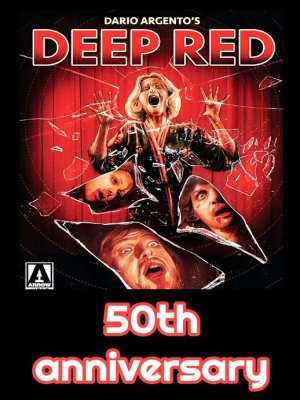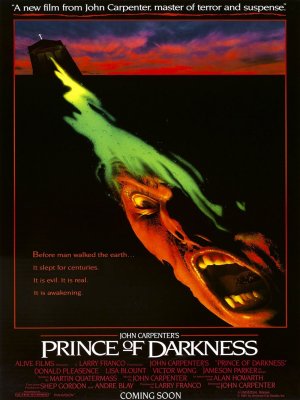6-Headed Shark Attack
What is supposed to be a marriage boot camp on a remote island turns into the ultimate test for survival when a 6-headed shark starts attacking the beach. Trapped with minimal weapons they try to fight off the shark, but quickly discover that no one is safe in the water or on land.
As any die-hard Jaws fan can tell you, it’s just not summer without at least one good (or better yet, not so good) shark movie to take in over a six pack and some popcorn. This year brought us 6-Headed Shark Attack, the latest of Asylum’s campy sequels to 2012’s low-budget 2-Headed Shark Attack. The film is directed by Mark Atkins (Sand Sharks, Planet of the Sharks) and stars Chris Fisher, Jonathan Pienaar, Brandon Auret, and Meghan Oberholder.
Whether horror fans have seen the films in the Shark Attack series or not, they’re likely pretty familiar with The Asylum. The indie film company is notorious among genre lovers for producing low-budget, ultra-cheesy, direct-to-video films that shamelessly attempt to capitalize on glossier productions from bigger studios and 6-Headed Shark Attack is hardly an exception. Like the previous Shark Attack films, as well as the better-known films in Asylum’s Sharknado franchise, this film is exactly the type of viewing it sounds like it would be. Whether or not that’s a good thing or a bad thing depends on how you feel about B-movies in general.
The premise of 6-Headed Shark Attack finds the next batch of victims hanging out on a remote island. They’re there to attend a marriage boot camp, so it’s probably not surprising that they’re not exactly prepared for a multi-headed shark attack. However, that’s exactly what they get when the titular monster begins launching its attack on the beach and surrounding waters, proving in the process that this time there’s nowhere to hide (even on dry land).
Fans of Asylum’s Shark Attack series are no doubt curious as to how concept designers planned to fit yet another head onto a new monster shark. (As it was, 5-Headed Shark Attack was forced to place the new head at the end of the shark’s tail.) They should prepare to be impressed by the starfish-shaped 6-headed shark for sure, especially when its unique shape allows it to attack on land as efficiently as it does in the water. This newest shark also has the miraculous ability to heal itself, which makes for some pretty far-fetched scenes to say the least. Some will make you groan heartily, others will make you laugh, but a few might actually impress you with their sheer creativity.
In other words, 6-Headed Shark Attack isn’t exactly fine cinema, but it hardly claims to be. Movies like this – especially when they’re sixth sequels -- are made solely to entertain. The fun of watching them lies in seeing how far over the top the antics can actually go and like the other Shark Attack films before it, this one doesn’t disappoint. It works because it delivers what it promises without trying to pull a switcheroo and that’s exactly what fans of Asylum productions are looking for. That being said, if you’re a fan of others in the same series (or campy creature films in general), this one is definitely worth your time. Give it a shot the next time you’re looking for some cheesy, crazy fun that doesn’t take itself too seriously.







